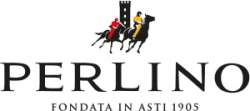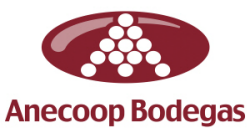Sparkling Wines
Sparkling wine & quality sparkling wine producers as exhibitors
Sekt, Prosecco or Champagne – if you can’t decide, ProWein is the right place for you. Here you will find the variety of the diverse world of wines under one roof. An exceptional experience that brings wine producers, wine wholesalers and gastronomy experts from all over the world together and puts Düsseldorf into a “vintastic” exceptional state for three days. So it’s hardly surprising that one highlight after the other is lined up here. One of them: the “Quality sparkling wines & sparkling wines” product category. With more than 300 exhibitors, this themed world on scintillating, sparkling wines is one of the most important themes at ProWein. Curious? Then find out more before the next trade fair here.
Every year, renowned wineries and quality sparkling wine producers come to the city on the right bank of the Rhine – including well-known Champagne producers from France, passionate sparkling wine producers from Italy and traditional quality sparkling wineries from Germany. Emerging sparkling wine and quality sparkling wine regions, such as England or South Africa, will also be present. Offering everything to show our visitors the widest possible range of traditionally produced milestones and creative reinterpretations.
But whether they’re an already long-established winery or newcomer, they all have one thing in common: their passion for quality sparkling wine and sparkling wine. They are experts in their field and show what the world of spritz has to offer from elegant Champagnes to sparkling Proseccos.
But ProWein would not be the largest leading international trade fair for wines and spirits if it did not also offer you the opportunity to expand your network and make new contacts with sparkling wine producers and quality sparkling wine suppliers alongside the new flavours and sophisticated tastes. Visitors and exhibitors can therefore network beforehand and arrange face-to-face meetings at ProWein.
Quality sparkling wine from Germany
In your search for the best sparkling wine, a stop in Germany is an absolute must. Quality sparkling wine from Germany is commonly known for its excellent quality due to a long tradition in sparkling wine production. The wine regions in the Palatinate and Rheingau are particularly noteworthy here as their climate and terroir offer the ideal conditions for sparkling wine production.
However, before you start drinking, the process of sparkling wine production already starts with the selection and harvesting of high-quality grapes. In Germany, grape varieties such as Riesling, Pinot Noir and Chardonnay are often used and then turned into their finest form using the “champagne method”, classic bottle fermentation. In terms of aromatics, sparkling wines from Germany are characterised by their fine bubbles, lively acidity and variety of aromas. If you have acquired a taste for this, you should make a note of the date of the next ProWein. Here you have the unique opportunity to get to know quality sparkling wine producers from Germany and all over the world – all united in one hall, with short walking distances guaranteed.
Quality sparkling wine production
The production of quality sparkling wines has a long tradition and combines history with sophisticated craftsmanship. It requires a certain finesse and experience to guarantee consistent quality and taste characteristics. Winemakers generally follow these steps:
Base wine: A good base is the foundation for a tasty end product. For this reason, the base wine is already crucial in the production of quality sparkling wines and sparkling wines. In this process, ripe grapes are selected and pressed to extract the juice for the fermentation to come. The selection of grape variety influences the taste and aromatic profile of the end product and lays the foundation for the future sparkling wine’s quality and character.
Primary fermentation: Once the grape juice has been extracted, the primary fermentation begins with the juice being fermented together with specially selected yeasts in tanks or barrels. During this fermentation process, the sugar is converted into alcohol and carbon dioxide. This primary fermentation process produces a dry wine with a moderate alcohol content, which does not have the effervescent properties of quality sparkling wine yet.
Cuvée (blending): Once the first fermentation is complete, it is blended to form a cuvée. In the process, various wines from different vintages and grape varieties are blended together to achieve the preferred taste and characteristic aroma for the quality sparkling wine.
Secondary fermentation: Secondary fermentation plays a crucial role in producing carbonic acid and the effervescent properties of quality sparkling wines and sparkling wines. There are two main methods for this secondary fermentation: the traditional bottle fermentation and the Charmat method. See below for more information.
Maturation: The secondary fermentation is followed by the sparkling wine’s maturation stage. The maturation period can vary from a few months to several years – depending on the desired quality standards and taste profile. During this time, the wines are stored in bottles or tanks to guarantee the perfect conditions for development. After maturation, the sparkling wine is bottled and sealed with a cork or cap. This final step ensures that the sparkling wine is well protected against oxidation and its characteristic properties are preserved.
The two main methods of fermentation for sparkling wine
The fermentation method plays a major role in the production of quality sparkling wines and sparkling wines. There are two different methods here: the traditional bottle fermentation and the Charmat method.
With traditional fermentation, also known as the “méthode traditionnelle”, the sparkling wine’s secondary fermentation takes place in the bottle. In the process, carefully selected grapes are made into wine and then mixed with yeast and sugar. The bottles are sealed with corks and stored for a certain period. During this fermentation in the bottle , carbon dioxide is produced which gives the sparkling wine its effervescent character.
With the Charmat method, the sparkling wine’s secondary fermentation takes place in special pressurised tanks. Once the base wine has been produced, yeast and sugar are added and the sparkling wine is stored in tanks under controlled pressure. The fermentation produces carbon dioxide, which is converted into carbonic acid in the wine. Then the sparkling wine is carefully drained, filtered and bottled. The Charmat method allows for large quantities of sparkling wine to be produced efficiently while still offering a variety of taste profiles and styles.
Which method is ultimately used, may depend on the company’s philosophy and vary from vintage to vintage. The difference in taste is probably only apparent to established experts. But why not carry out an experiment yourself? Visit us at ProWein and test your way through the different sparkling wines our exhibitors have on offer. Who knows, maybe you will find your new favourite quality sparkling wine or Prosecco.
-
Exhibitor
PERLINO S.P.A.
Asti, Italy
-
AECAVA Cava Producers Association (INSTITUT DEL CAVA)
Sant Sadurní d'Anoia, Spain -
Agricola Spagnol Domus - Picta
Valdobbiadene (TV), Italy -
Agusti Torello Mata S.A.
Sant Sadurni d'Anoia, Spain -
Alcoline LLC
Bolgrad, Ukraine -
ALTA ALELLA · CELLER DE LES AUS
Tiana, Spain -
ANECOOP S.COOP.
Valencia, Spain
-
Antica Cantina Fratta SPA
Monticelli Brusati, Italy -
ANTONIO MASCARO SL
Vilafranca Del Penedes, Spain -
Exhibitor
APOLLONIS - Champagne - Michel Loriot
Festigny, France -
Arione Spa
Canelli (At), Italy -
Arunda Sektkellerei s.r.l.
Meltina Autonome Provinz Bozen -Südtiro, Italy -
Astoria Vini s.r.l.
Refrontolo (TV), Italy -
Az. Agr. La Jara di Marion M.
Mareno di Piave (TV), Italy -
Az. Agr. Mirabella srl
Rodengo Saiano (BS), Italy -
AZ. AGR. REBULI ANGELO & FIGLI SA
Valdobbiadene, Italy -
AZ.AGR.BORGO ANTICO DI MARCHESIN LEONARDO
Conegliano (TV), Italy -
AZIENDA AGRICOLA ANDREOLA DI POLA STEFANO
Farra di Soligo (TV), Italy -
Azienda Agricola Biasiotto S. Ag. S.
Quero Vas (BL), Italy -
Azienda Agricola Dal Bello Antonio
Fonte, Italy
- 02.01 Fruit-flavoured sparkling wine (11 exhibitors)
- 02.02 Pearl wine (11 exhibitors)
- 02.03 Pearl wine with added carbon-dioxide (4 exhibitors)
- 02.04 Sparkling wine (81 exhibitors)
- 02.05 Sparkling wine with added carbon-dioxide (2 exhibitors)
- 02.06 Quality sparkling wine/Sekt (12 exhibitors)
- 02.07 Quality sparkling wine/Sekt with origin (250 exhibitors)